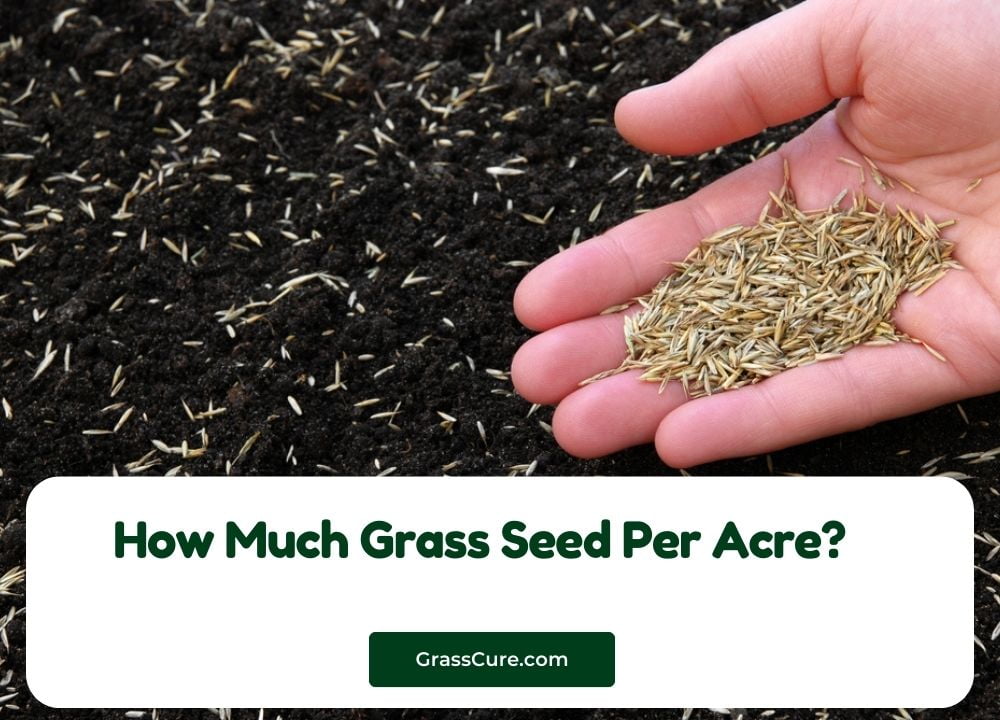Granular fertilizers play a crucial role in gardening and agriculture by providing essential nutrients to plants in a controlled manner. Unlike liquid fertilizers, which offer immediate nutrient availability, granular options release nutrients gradually, allowing for sustained feeding over time. This blog post will explore how long it takes for granular fertilizers to work, examining the factors that influence their effectiveness and providing insights into how to optimize their use for healthy plant growth. Understanding these timelines can help gardeners and farmers make informed decisions, ensuring their plants receive the nourishment they need to thrive.
Contents
Understanding Granular Fertilizers
Granular fertilizers are solid nutrient sources that come in small, pellet-like forms, designed for easy application in gardens and agricultural fields. These fertilizers can be categorized into various types, including slow-release and quick-release formulations, as well as organic and synthetic options.
Slow-release fertilizers gradually break down over time, providing a steady supply of nutrients to plants. This makes them ideal for long-term feeding, allowing gardeners to space out applications and reduce the risk of nutrient leaching. Quick-release fertilizers, on the other hand, dissolve rapidly in the soil, delivering nutrients almost immediately. While they can lead to faster plant responses, they also require more frequent applications to maintain nutrient levels.
Granular fertilizers offer several benefits. Their ease of application allows gardeners to spread them evenly across the soil, reducing the risk of over-fertilization in specific areas. Additionally, their slow-release nature helps prevent nutrient runoff into waterways, making them more environmentally friendly than some other fertilizer types. Understanding the different types of granular fertilizers and their unique characteristics is essential for selecting the right one for specific gardening needs.
Factors Affecting the Time Granular Fertilizer Takes to Work
Several factors influence how quickly granular fertilizers begin to show results in plants. Understanding these elements can help gardeners and farmers optimize their fertilization practices for better plant growth.
One major factor is the type of granular fertilizer used. Slow-release fertilizers are designed to release nutrients gradually over an extended period, often taking several weeks or even months to show noticeable effects. In contrast, quick-release fertilizers dissolve rapidly in the soil, typically delivering nutrients within a week or two. Choosing the right type based on desired results is crucial for effective plant feeding.
Soil type also plays a significant role in nutrient absorption. Sandy soils tend to drain quickly, which can lead to faster nutrient leaching and may require more frequent applications of fertilizers. Clay soils, being denser, can retain nutrients better, but they may also slow down the movement of nutrients to plant roots. Loamy soils often provide an ideal balance for nutrient retention and availability, affecting how quickly plants can access the fertilizer.
Weather conditions further impact the effectiveness of granular fertilizers. Warmer temperatures and adequate moisture can accelerate nutrient release, while colder, drier conditions may slow down the breakdown of the fertilizer. Rainfall can also wash away nutrients if it occurs too soon after application, especially with quick-release formulas.
Finally, the type of plants and their growth stages influence how quickly they utilize the nutrients from fertilizers. Young, actively growing plants typically absorb nutrients more rapidly than established plants. Understanding these factors helps gardeners time their fertilizer applications effectively, ensuring that plants receive the nutrients they need when they need them.
General Timeline for Effectiveness
The effectiveness of granular fertilizers can vary significantly based on their type and the conditions in which they are applied. Generally, understanding these timelines can help gardeners set realistic expectations for plant growth.
Quick-release fertilizers are designed for immediate nutrient availability. Once applied, they typically begin to dissolve within a few days, allowing plants to absorb essential nutrients within one to two weeks. This rapid response makes quick-release fertilizers ideal for addressing specific nutrient deficiencies or promoting quick growth, especially during critical growth phases or in emergency situations.
In contrast, slow-release fertilizers offer a more gradual approach to nutrient delivery. These fertilizers are formulated to break down slowly over time, providing a sustained release of nutrients. As a result, noticeable effects may take several weeks to months. For example, it might take anywhere from four to twelve weeks for plants to fully benefit from a slow-release fertilizer, depending on factors like soil temperature, moisture, and the specific formulation used. This prolonged nutrient supply can lead to healthier, more resilient plants over time.
Specific examples illustrate these timelines effectively. For instance, a typical quick-release nitrogen fertilizer may show results within a week, while a slow-release option might take around eight to ten weeks for significant growth improvements. Understanding these timelines allows gardeners to plan their fertilization schedules more effectively and ensures that their plants receive optimal nourishment at the right times.
Signs That Granular Fertilizer is Working
Recognizing the signs that granular fertilizer is effectively nourishing your plants is essential for determining its impact on growth and overall health. Several indicators can help gardeners assess the effectiveness of their fertilizer application.
One of the most visible signs is improved plant growth. As granular fertilizer takes effect, you may notice your plants growing taller, developing more leaves, and exhibiting increased overall vigor. New growth may appear more robust, with healthier foliage that exhibits a vibrant color. For flowering plants, you might see more blooms or larger flowers, indicating that the plants are receiving adequate nutrients.
Color changes in the leaves can also signal that granular fertilizer is working. Healthy plants typically display lush, green leaves, while nutrient deficiencies may result in yellowing or pale foliage. If the leaves transition to a deeper green hue after applying fertilizer, it often indicates that the plants are absorbing essential nutrients, particularly nitrogen.
In addition to visual indicators, you can monitor the plants’ response over time. Observing how quickly plants begin to exhibit these signs after application can provide insight into the effectiveness of the granular fertilizer. For quick-release fertilizers, you may see results within a week or two, while slow-release options may take several weeks before noticeable changes occur.
Soil testing can further confirm the efficacy of your fertilizer. Conducting a soil test before and after applying granular fertilizer can help you measure nutrient levels, pH, and soil health. If the test reveals an increase in essential nutrient levels, it indicates that the fertilizer is working as intended.
Best Practices for Applying Granular Fertilizer
Applying granular fertilizer effectively can maximize its benefits and promote healthy plant growth. Here are some best practices to consider:
Timing is crucial when applying granular fertilizer. Early spring or fall is often the best time for many plants, as they are either preparing for growth or entering dormancy. Understanding the specific needs of your plants will help you determine the ideal application time. Avoid fertilizing during extreme heat or drought conditions, as this can stress plants and reduce nutrient uptake.
Proper application techniques are essential for ensuring even nutrient distribution. Begin by reading the manufacturer’s instructions for recommended application rates based on your plant type and soil conditions. Use a broadcast spreader for larger areas to ensure an even distribution, while a hand-held spreader can be effective for smaller spaces. Be careful to avoid over-fertilizing, as this can lead to nutrient runoff, plant damage, or soil imbalance.
Incorporating granular fertilizer into the soil can enhance its effectiveness. Raking or tilling the soil lightly after application helps mix the fertilizer with the top layer, improving nutrient access for plant roots. Watering the area after application can also aid in dissolving the granules, allowing nutrients to penetrate the soil more quickly.
Combining granular fertilizers with organic matter, such as compost or well-rotted manure, can further enhance nutrient availability and improve soil structure. Organic matter helps retain moisture and encourages beneficial microbial activity, creating a healthy environment for plants.
Lastly, consider monitoring plant growth and soil health regularly. Observing how your plants respond to the fertilizer over time can help you adjust future applications based on their needs. Conducting soil tests periodically will provide insights into nutrient levels and help you make informed decisions about fertilization practices.
Conclusion
Understanding how long it takes for granular fertilizers to work, as well as the factors influencing their effectiveness, is vital for successful gardening and agriculture. Whether using quick-release or slow-release fertilizers, recognizing the signs of effectiveness and implementing best practices for application can significantly enhance plant health and growth.
By choosing the right type of fertilizer, timing the application appropriately, and employing effective techniques, gardeners can ensure their plants receive the essential nutrients they need. Regular monitoring of plant responses and soil health further aids in optimizing fertilization practices, fostering robust and resilient plants.
Ultimately, a thoughtful approach to using granular fertilizers not only supports plant growth but also contributes to sustainable gardening practices, promoting environmental health and resource conservation. With this knowledge, gardeners can confidently cultivate thriving landscapes and enjoy the fruits of their labor.






